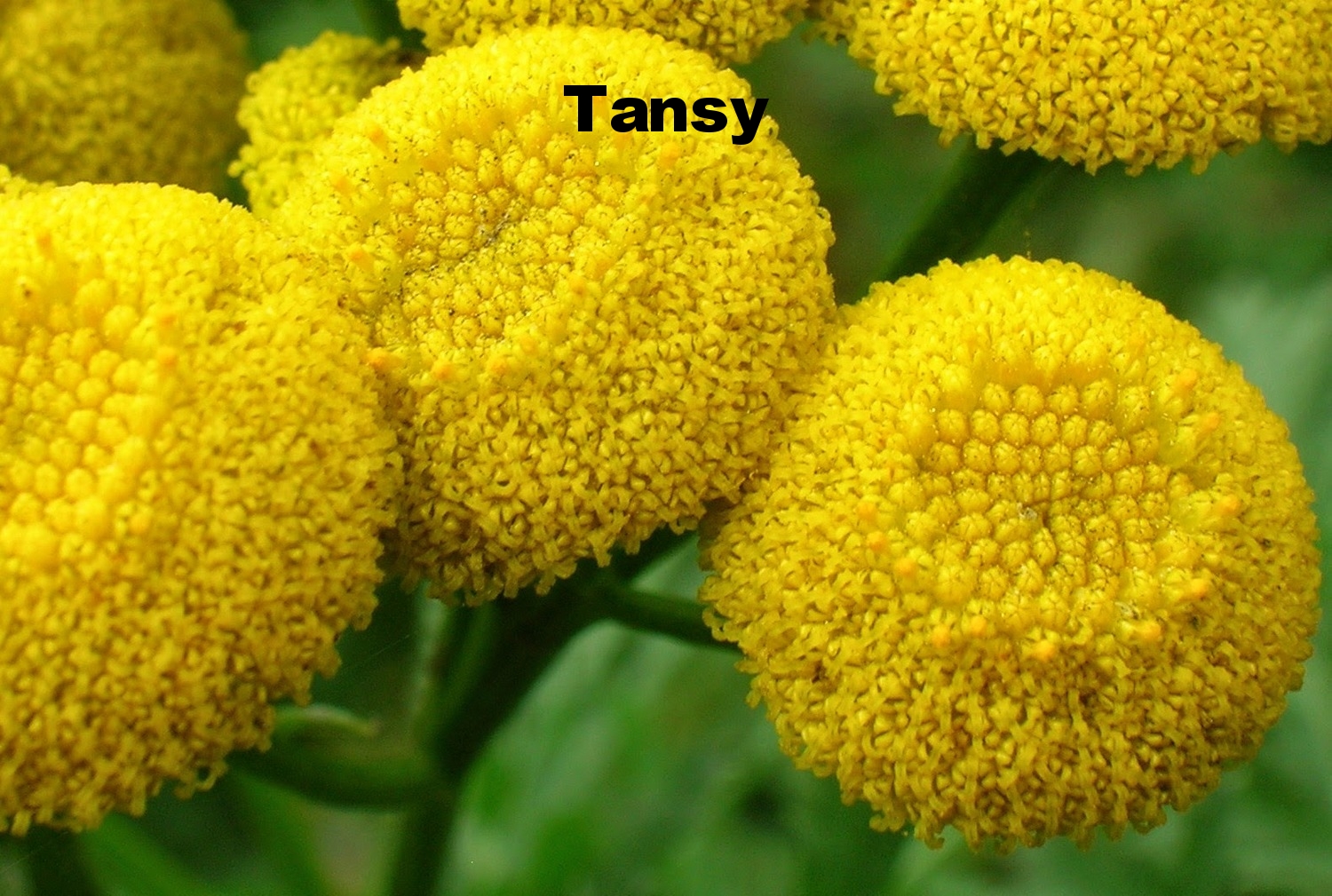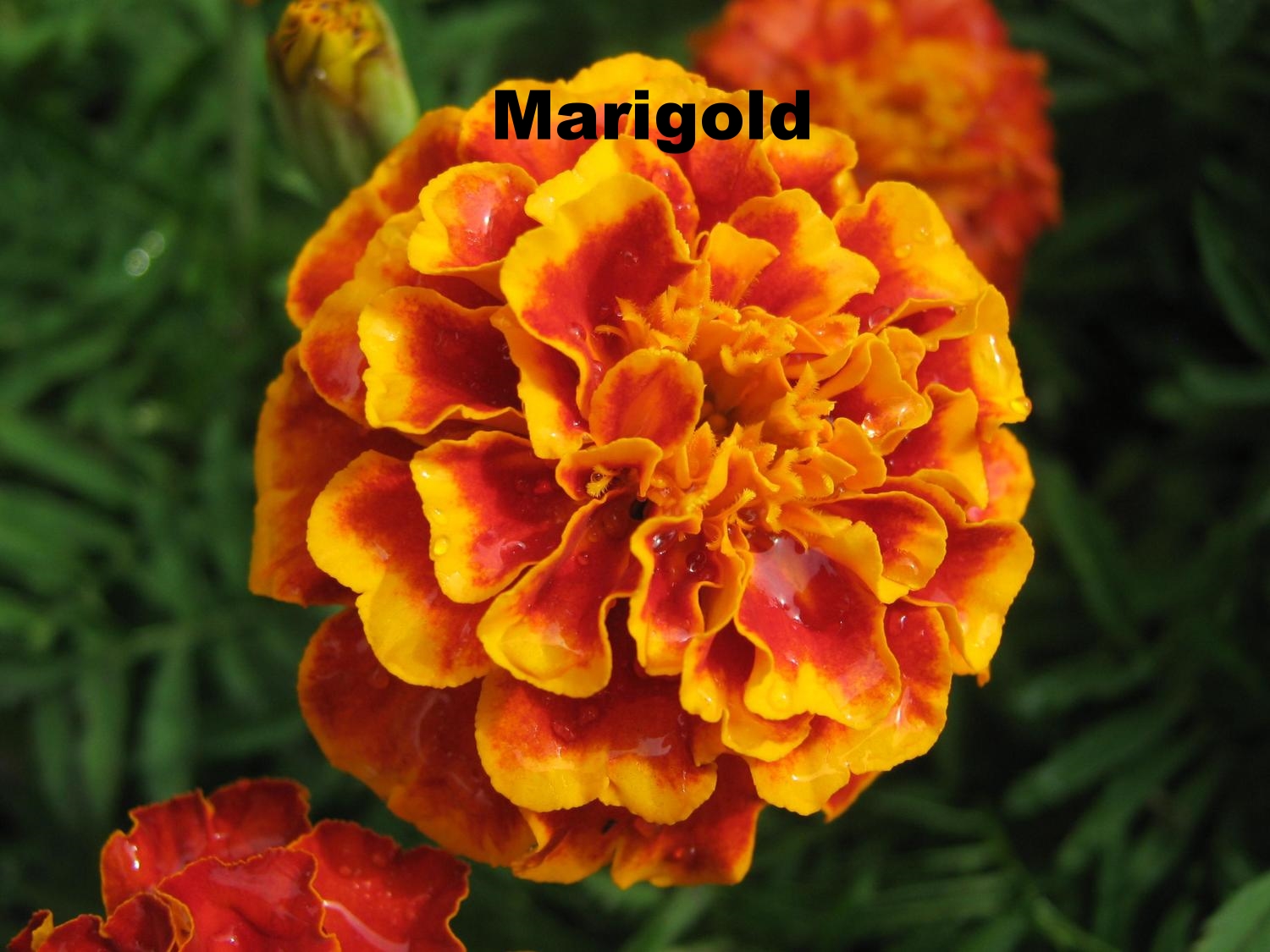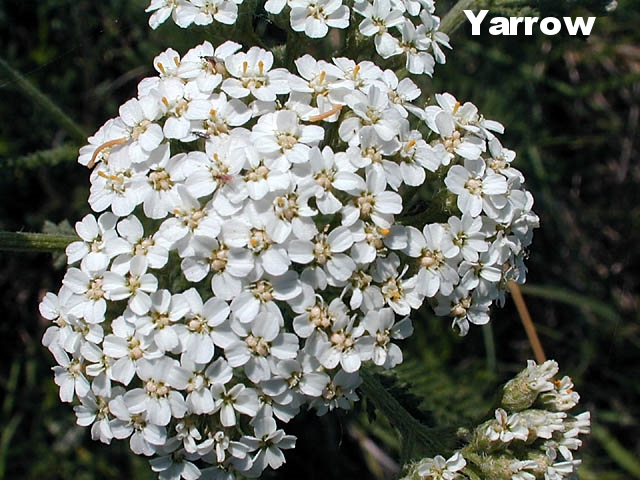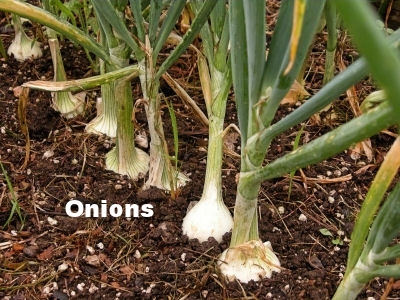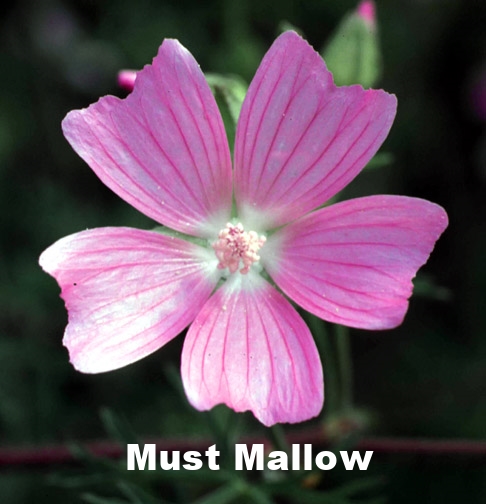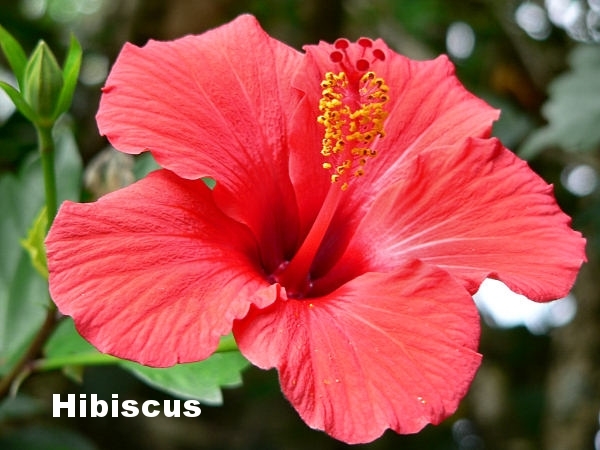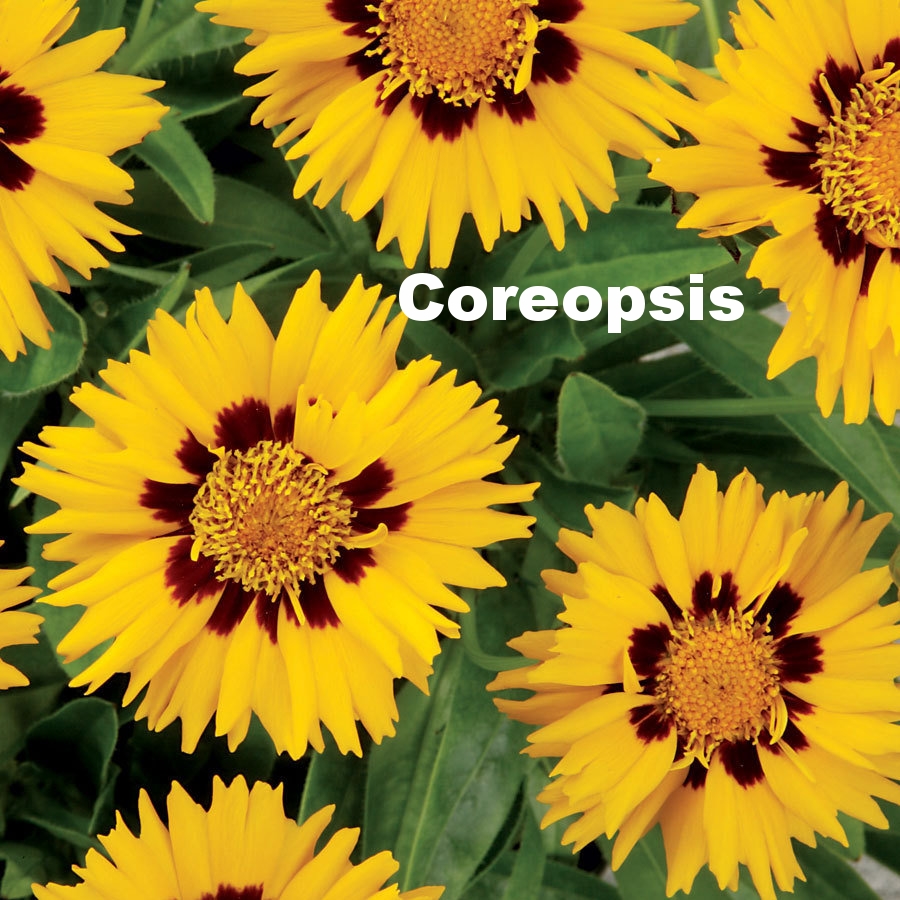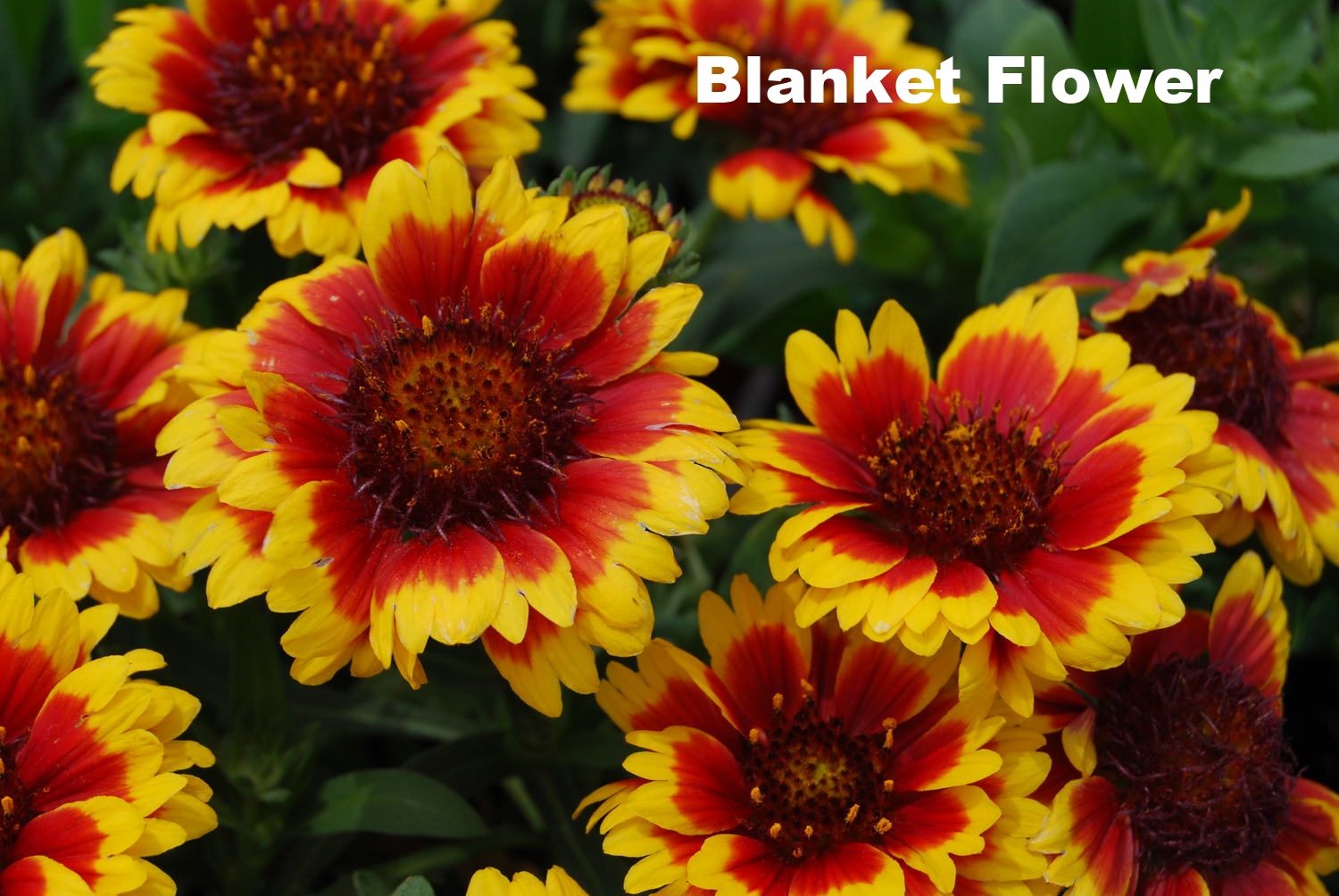The Dye Gardens
The Dyers’ Garden at Smith’s Castle Gardening isn’t a traditional part of dyeing. Most dyers gathered local wild plants and weeds or purchased imported dyestuffs of indigo and cochineal. However, our Dyers’ Garden has examples of 12 common garden plants from the New England area that yield dyes in a rainbow of colors.
Other uncultivated plant materials on the grounds of the Castle also contribute to that rainbow. Trumpet vine blossoms, sumac berries, oak bark, Queen Ann’s lace, and goldenrod all have been collected and used for dye pots. A stroll through our garden, using the numbered guide, and a visit to the North Chamber to view the color wheel of dye samples, will give you a feel for the many hues our familiar New England plants yield.
Here are the plants found in the Dyers’ Garden:
Tansy, Tanacetum vulgare. Cole’s Art of Simpling,published in 1656, assured that tansy tea cured every ill that flesh is heir to. Such strong credence was given to its medicinal powers in Europe, it is not surprising that the colonists felt they could not live without it. Tansy, a runaway from old gardens, is a perennial feature along the New England roadside.
Sunflower, Helianthus giganteus. In the early 1600s, when Champlain visited native Americans on Lake Huron’s eastern shore, the sunflower was being cultivated for a textile fiber within the stalks, leaves for fodder, flowers for dye, and seeds for food and hair oil. The flowers were described as “greater than a greate platter or dishe” and “marveilous faire in gardines.” Indeed!
Marigold, Tagetes sp. Sometimes called the “pot marigold,” because it was put in the cooking pots as a substitute for saffron, to color cakes, butter, and puddings, it was also used for broths and dye. The 16th century herbalist, William Turner sternly explained: “Some use to make their heyre yellow with the floure of this herb, not being contet with the naturall colour which God hath given them.” Some things never change.
Yarrow, Achillea millefolium. Everywhere, this commonest of common weeds confronts us. Appearing in mythology, to 17th century herbalists, to battlefields of the Civil War, to roadsides around the world, this plant is called the “All Heal.” It has great medical and some say magical, qualities to help the blood clot. It has been used as a general tonic for nosebleed, loss of hair, reducing fevers, earache, head colds, bruises, toothache, and stimulation of the appetite.
Onions, Allium cepa. Cultivated for 5,000 years, the versatile onion has been a food for both the poor and the wealthy. According to diaries of colonists, bulb onions were planted as soon as land could be cleared.
Musk Mallow, Malvaceae. A relative of the Hollyhock, Hibiscus, and Cotton plant, the wild Malvaceae plants were used medicinally, and the root was used to make a confection called marshmallow. The medicinal uses listed in 1652 include “belly, stones, reins, kidneys, wheezing, cramp, chincough (whooping cough), wounds, falls, and sun-burning. The fibrous stems can be used to make cloth and the plant yields a very good dye.”
Rudbeckia, Compositae. This native of North America is affectionately known as “Black-Eyed Susan” who figures in many ballads and songs. The saucy Susan’s flower was named Rudbeckia by the 1730 botanist Linnaeus when he was employed by Olaf Rudbeck as a tutor for his three children. He named the flower after his patron, saying “so long as the Earth shall survive and as each spring shall see it covered with flowers, the Rudbeckia will preserve your glorious name.”
Hibiscus, Malvaceae. A relative of the Musk Mallow, Hibiscus blossoms are good for dyeing cloth and make a wonderful tea.
Nasturtium, Tropaeolum. As early as 1592, botanist John Gerard observed that “one plant doth occupie a great circuit of ground.” Thomas Jefferson planted nasturtiums every year and in a letter to Bernard Peyton said, “I missed raising nasturtium seed the last year and it is not to be had in this neighborhood. Can your seedmen furnish it?” He wanted enough seed for a bed of nasturtium ten by nineteen yards!
Coreopsis, Coreopsis. A native American wildflower, coreopsis grows easily in fields and sunny open spaces. The genus name means “bed bug” because the seeds are black, have a small hook on one end and look like a tiny bug. Another common name is tickseed. Seeds from the plant were put into the stuffing of pillows and mattresses to help repel insects.
Blanket Flower, Gaillardia. This plant, named for the 18th century botanist Gaillard de Charentonneay, is native to North America. The common name, blanket flower, was inspired by the designs and colors of native American weavings.
Solomon’s Seal, Smilacina racemosa. From New Brunswick to Florida, this shade loving plant is a native wildflower. From a thick rootstock, a single graceful curved stem arises each spring. As it dies back there is a scar left behind whose outline resembles the seal of Israel’s wise King Solomon. As you read the age of a tree by the rings in the trunk, so you tell the age of this plant by the number of “seals.”
